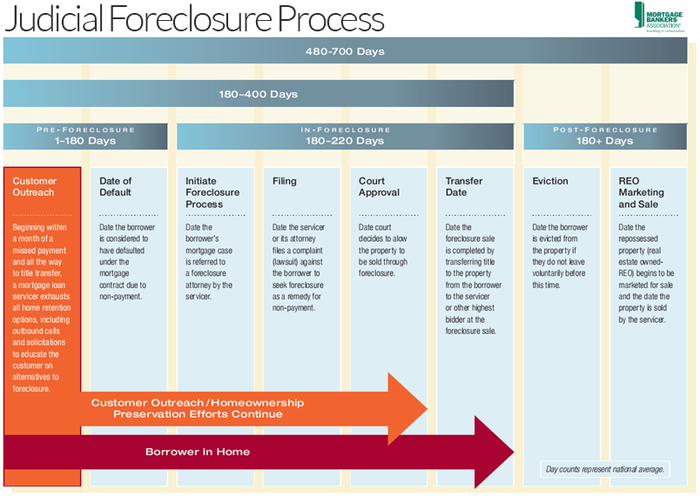
Foreclosure is a situation in which a homeowner is unable to make full principal and interest obligations on his/her mortgage, which allows the lender to seize the property, evict the homeowner and sell the home, as stipulated in the mortgage agreement. One month after the homeowner misses a home loan payment, he/she is in default and will be notified by the lender. Three to six weeks after the homeowner yearns for a mortgage payment, presuming the mortgage is still delinquent, and the home owner has not composed the missed payments inside a particular grace period, the lender will start to foreclose. The farther behind the borrower falls, the more difficult it becomes to capture up since lenders add fees for payments that are 10 to 15 days overdue.
Each state has its own foreclosure laws within the notices the lender must post publicly and/or with the homeowner, the homeowner's selections for bringing the loan current and avoiding property foreclosure, and the procedure for marketing the property. In twenty two states – including California, Illinois, and Ny ~ judicial foreclosure is the norm, meaning the lender must go through the courts to get authorization to foreclose by demonstrating the borrower is late.
If the foreclosure is approved, the local sheriff online auctions the property to the maximum bidder to try to recoup what the bank is due, or the bank becomes the owner and offers the house through the traditional route to recoup the loss. The entire judicial foreclosure process, from the borrower's first, missed payment through the lender's sale of the home, usually will take 480 to 700 days and nights, in accordance with the Mortgage Bankers Association of America.
The other 28 states – including Arizona, California, Georgia and Texas – mostly use non-judicial foreclosure, also called the power of sale, which tends to be faster and really does not go through the courts unless the house owner sues the lender.
Another Image of Foreclosure Redeemed:
Komentar
Posting Komentar